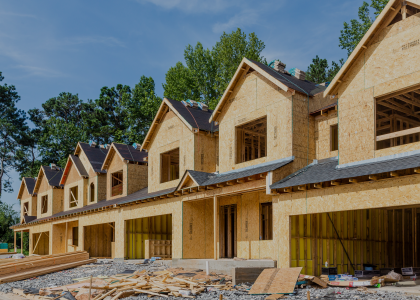Washington, DC—A massive year-end bill, announced by congressional leaders today, includes provisions to improve the weatherization of low-income homes and reduce industrial emissions, while missing the opportunity to include a critical measure that could save $40 billion in energy costs by making new buildings more efficient.
This omnibus bill, which funds the federal government for the remainder of the fiscal year and provides $900 billion in COVID-19 relief funding, also contains a bipartisan package of energy legislation, including several efficiency measures. The bill would:
- Modernize the federal Weatherization Assistance Program to help it address health and safety issues in homes, add solar cells, and test innovative approaches to expanding weatherization. These provisions are based on legislation sponsored by Reps. Bobby Rush (D-IL) and Paul Tonko (D-NY) and Senators Chris Coons (D-DE) and Susan Collins (R-ME).
- Reduce industrial energy use and greenhouse gas emissions through research and development of efficient industrial technologies, technical assistance, and the development of a national smart manufacturing plan.
- Authorize a smart buildings program, energy and water-saving pilot programs, an energy-saving information technology plan, coordination of assistance for retrofits in schools, rebates for efficient motors and transformers, and other programs.
- Make technical corrections to better measure the energy efficiency of large ceiling fans in standards.
“We applaud these meaningful steps, but we urgently need efficiency efforts at an even greater scale to address the climate crisis and create the large numbers of jobs that will get us out of this recession,” said Steven Nadel, executive director of the American Council for an Energy-Efficient Economy.
The bill also would require federal agencies to perform cost-effective efficiency measures identified in energy audits, using performance contracting for half of them.
The bill omits certain bipartisan provisions, including one that would help cities and states voluntarily implement stronger building codes. Those provisions were passed by the House and included in a proposed bipartisan amendment to the Senate energy bill. An ACEEE analysis published in February found that these provisions would save households and business almost $40 billion in energy costs (net after investment) over the lifetime of the measures through 2050, and would reduce carbon dioxide emissions (cumulatively) by an amount equivalent to the emissions from 300 coal-fired power plants in one year.
The bill’s COVID-19 relief section includes $14 billion in funding for struggling public transit agencies, whose success is key for reducing greenhouse gas emissions, creating healthy and livable communities, and ensuring equitable access to clean transportation. An earlier House-passed relief bill would have given $32 billion in transit funding.
The bill announced today generally maintains funding for the Department of Energy’s Office of Energy Efficiency & Renewable Energy (EERE), the home of several major federal energy efficiency initiatives. The Weatherization Assistance Program and Building Technologies Office receive slight increases.
The bill also makes permanent a tax deduction for commercial building owners to make energy efficiency upgrades. It indexes the incentive value to inflation and allows the IRS and Energy Department to update the baseline efficiency level to require greater efficiency (except for lighting).
In contrast, the bill again extends outdated tax incentives meant to spur home energy efficiency improvements and the construction of efficient new homes. Because these incentives have been extended year to year without updating the efficiency requirements even as technology has evolved, today their market impact appears to be limited. Members of Congress from both parties have proposed a plan—supported by manufacturers and efficiency advocates—to modernize the credits to ensure they can effectively drive energy efficiency improvements.
President-elect Biden and House Speaker Pelosi have been clear that they view this bill as only a stopgap, and believe larger investments in the economy are needed next year. An ACEEE analysis published in September found that Congress could help confront the economic and climate crises together using a series of 17 energy efficiency programs and tax incentives. The analysis found these efforts could add 660,000 job-years through 2023 while cutting $120 billion in energy bills and reducing carbon dioxide emissions equivalent to those released by nearly 200 million passenger vehicles in a year.


